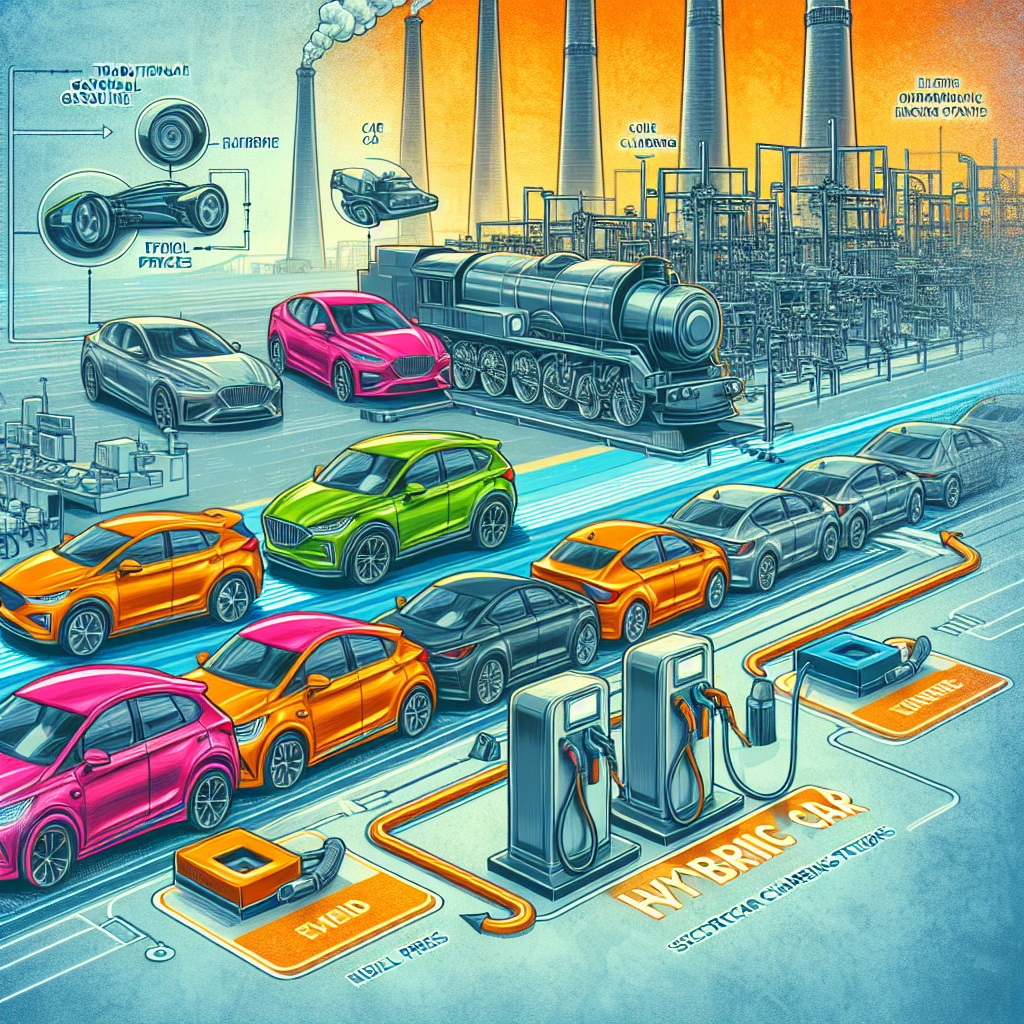Consumers are facing an increasing variety of choices when it comes to automobiles, from traditional gasoline cars to electric vehicles and hybrid cars. With fuel prices remaining high and charging stations not always easy to find, hybrid cars are gaining popularity among consumers. Car manufacturers are also introducing a variety of hybrid models to cater to this growing demand.
Despite government efforts to promote electric cars, factors like pricing and lack of charging infrastructure have hindered consumer adoption, leading many to opt for hybrid vehicles instead. Hybrids offer sufficient electric range for daily errands and commuting, while also featuring a gasoline engine to alleviate concerns about range anxiety.
Hybrid cars are generally divided into two types: plug-in hybrids (PHEVs) and standard hybrids. Standard hybrids do not require external charging as they have a smaller battery that stores limited electric power. This power is used to adjust the engine’s operation, optimizing fuel efficiency by allowing the engine to work in its most efficient range, providing a driving experience closer to that of a gasoline car.
PHEVs are similar to traditional hybrids but come with the added feature of being able to be charged externally at charging stations. This enables them to operate on electric power alone for a distance, seamlessly switching to conventional hybrid mode once the battery is depleted.
The advantages of PHEVs include low noise levels, low emissions, and the flexibility to choose between different power modes based on driving needs. For longer trips, the internal combustion engine can be used predominantly, while shorter commutes can be done in pure electric mode.
However, the drawbacks of PHEVs include higher costs compared to other versions of the same model, limited all-electric range, potential reduction in cargo space due to larger batteries, increased vehicle weight compared to traditional powertrain versions, and more complex maintenance requirements.
According to a list compiled by “US News & World Report,” here are some of the best plug-in hybrid SUVs across various categories, as well as the top 10 overall plug-in hybrid SUVs:
– The 2025 Mazda CX-90 PHEV is highlighted as the best overall plug-in hybrid SUV for its powerful performance, luxurious interior, and advanced entertainment and safety technologies.
– In the luxury plug-in hybrid SUV segment, the Volvo XC60 Recharge is recognized as the top choice, boasting high-quality interior, stylish design, impressive acceleration, and comfortable driving experience.
– While not on the top PHEV list, the Kia Niro stands out as the most affordable plug-in hybrid SUV, offering a lively compact crossover design with a starting price of $34,390.
– Land Rover’s Range Rover and Range Rover Sport, though not top-ranked, are noted for their long 51-mile electric range in pure electric mode, making them the best performers in this category.
– The most reliable plug-in hybrid vehicle is the Toyota RAV4 Prime, scoring 81 points according to J.D. Power ratings. J.D. Power reliability predictions categorize a score of 91-100 as the best, 81-90 as excellent, 70-80 as average, and 0-69 as below average.
With prices ranging from $38,725 to $91,700 and receive ratings of 8.6 to 9.3 out of 10 from “US News & World Report,” these vehicles offer a range of options for consumers seeking environmentally friendly and efficient transportation solutions.

